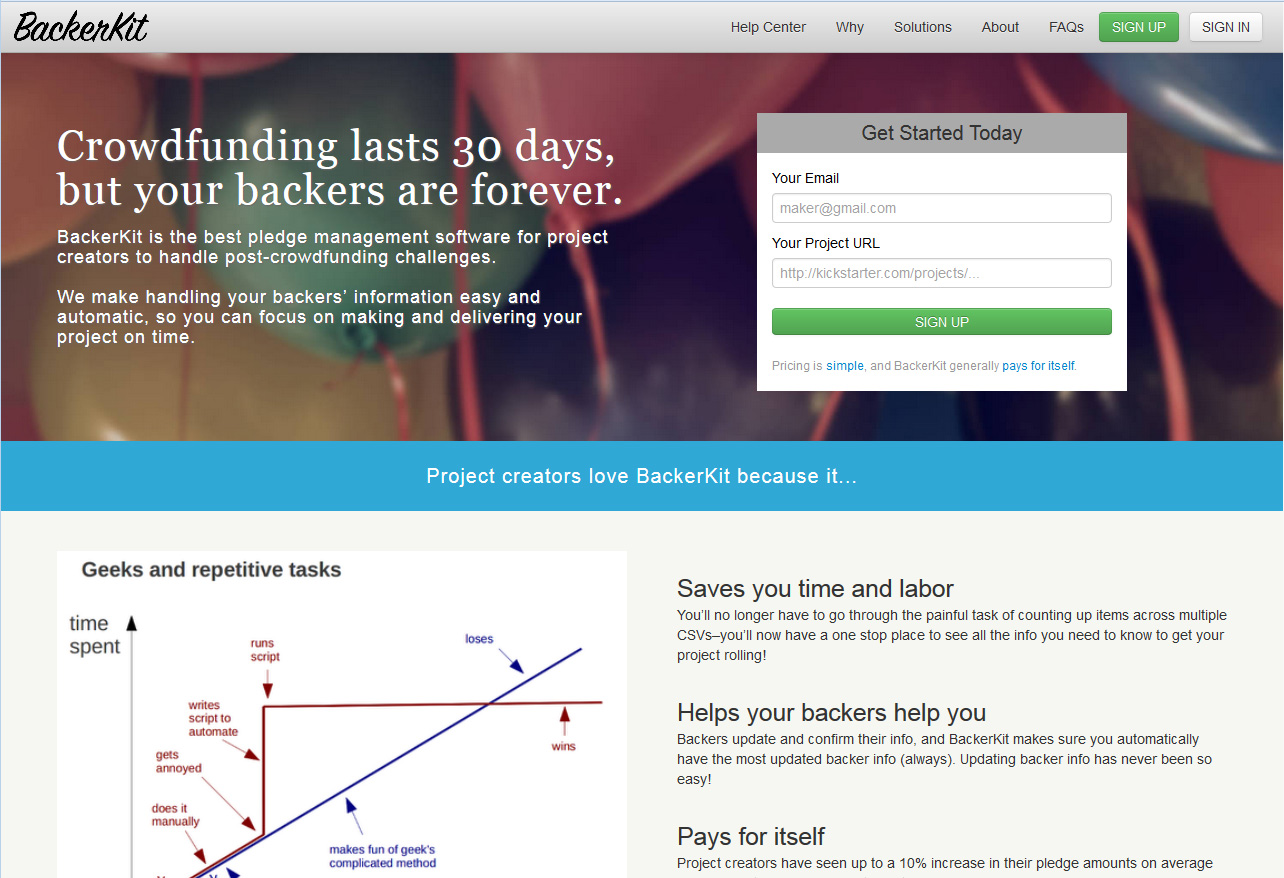When a crowd-funding campaign succeeds in reaching its goal you might think the hard part is over, whilst raising those funds are vital, it is sometimes just as big an organizational challenge to fulfill all the rewards promised to your backers in a timely fashion.
For a campaign that has received hundreds or thousands of donations this can be a difficult and overwhelming task. According to a very informative article published last year on money.cnn.com, 84% of Kickstarter’s top projects in 2012 failed to meet their completion deadline. It was this very article that partly inspired BackerKit, a new venture by Max Salzberg, one of the four co-founders of Disapora.
In 2010 Disapora became the most backed project on Kickstarter raising a respectable $200,000. The project was a success and was recently handed over to its community to run, but their Kickstarter generated 20 times their goal from 6,479 backers, and providing aftercare to those who handed over some of their hard earned money was a struggle. Learning from his previous experience Salzberg is one of the founders of BackerKit, which aims to keep campaign backers happy. Providing a time saving way for project owners to manage their post-campaign obligations, this could be the solution to a new but widely spread problem.
In an interview on Mashable.com Salzberg said “Kickstarter is super optimized to help you raise money, but they just kind of give you a list of people who donate and that’s it. There’s so many more niceties to it.”

All good crowd-funding platforms have measures in place to protect the backers; projects and rewards have to be delivered by a set date but aside from damaging the credibility of the campaigners there needs to be a better way to manage aftercare.
From my own experience with crowdfunding I whole heartedly agree with this point, we reached our goal with a small number of backers but collating all the information was still a time consuming task. Most crowdfunding sites encourage project owners to regularly update and interact with their backers but this isn’t always the case.
There’s a helpful feature that allows backers who have over donated to select additional perks up to the value of their pledge, or if they’d upgrade to another reward they can pay the difference. One thing that did stand out about this feature was it will likely displease Kickstarter as they will be cut out of any additional donations, although I’m hardly going to lose any sleep worrying about Kickstarter’s bank balance. You’d think that as the alleged top dog in crowdfunding the Kickstarter peeps would have thought of this feature first.
Looking through the services that the site offers it really has been designed for a user friendly experience. A quick and easy integration with Kickstarter that “only takes 5 seconds to get setup” according to their homepage. I have to admit that I was annoyed somewhat when I mistakenly assumed BackerKit could only be used with Kickstarter, thankfully they are working on a version that will work alongside other platforms.
Personal accounts allow the backers to stay up to date with and see the progress of their reward, they can download digital perks and access shipping status updates. The latter is a very important feature as more and more pledges are coming from overseas. For any physical reward you get notifications when shipping statuses change.
For any campaign the way the the backers rewards are dispatched and delivered will play a huge part in securing their loyalty for future projects. There’s a lot of potential with BackerKit to help make customer aftercare an easy and engaging task. The cost for using the service starts from $99 (£63) per month, so this might not be affordable for every campaign.
Should everything go to plan, myself and the other Jellyfielders will be in need of a crowdfunding platform for our next online film project, I hope BackerKit is available for other sites aside from Kickstarter by then as we’re sold on using Indiegogo this time.